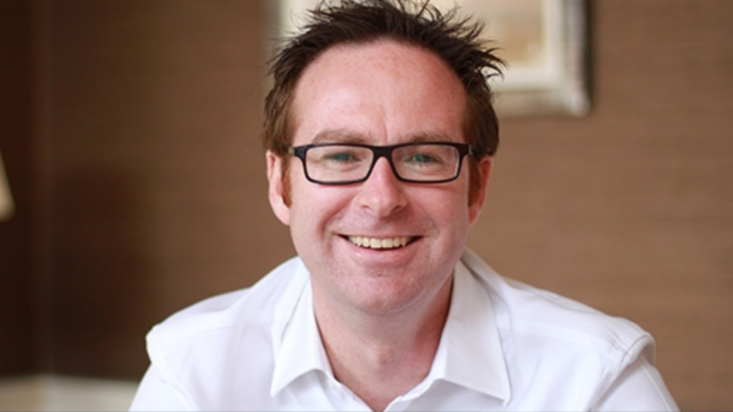In the shadow of Edinburgh Castle, reinvestment is the Rock of Ages
It’s almost an anomaly: a dividend-focused fund that doesn’t necessarily want to receive dividends.
To Edinburgh-based Dundas Global Investors, the growth of a company’s dividend is more important than the actual income from that dividend. The firm would rather see the companies that it invests in reinvest their dividends.
It follows that Dundas likes to see payout ratios as low as possible.
“We want less dividends today,” says Dundas partner Neil Sutherland. “We don’t invest for yield, which we think is simply the ratio of the dividend to the share price.
“What we do look for is sustainable growth in profitability and cash flow,” he adds. “We think there’s unlikely to be real earnings growth unless cash flows grow, and the dividend is the best test of sustainable cash flow growth. The dividend growth aspect is a predictable way to get long-term outperformance.”
Sutherland highlights a 2016 study commissioned by the Norwegian Ministry of Finance for the country’s sovereign wealth fund, the Government Pension Fund of Norway, that broke down the components of the MSCI All Country World Index total return over 20 years.
It found that over a period of one year, just over half of the index’s total return came from valuation changes, while 11 per cent came from the dividend yield, and 38 per cent came from dividend growth.
But over a longer period of 10 years, the study found that 79 per cent of the total return came from dividend growth and dividend yield, while only 21 per cent came from moves in valuations.
Over a 20-year period, 93 per cent of the total return came from dividend growth and dividend yield, with only 7 per cent coming from moves in valuations. “Fundamentals drive returns; where dividends go, share prices follow,” Sutherland says. “Dividend growth is the unsung hero of long-term total returns.”
Dundas, which manages the Apostle Dundas Global Equity Fund offered in the Australian market, likes to give its stocks time to express this; the fund has an average holding period of 6.5 years. Sutherland says the $2 billion portfolio is globally diversified, albeit 56.2 per cent exposed to the US (compared with 61.9 per cent for the index), with IT the biggest exposure, at 27 per cent (a 5 percentage-point overweight), and healthcare the second-largest, at 20.6 per cent (an 8.7 percentage-point overweight).
There are 63 stocks in the portfolio, with Microsoft the largest holding, at 3.5 per cent, and an average individual stock holding of 1.6 per cent. Companies must have a market capitalisation of at least US$1 billion ($1.5 billion) to be considered.
As a long-term investor, Sutherland says, Dundas places much greater emphasis on future income streams than on current payout ratios. “True sustainable dividend growth only comes if the company is reinvesting its cash flows into R&D [research and development] and capex. So, a high reinvestment rate is vital; we think of reinvestment as the first call on the free cash flow.
“We spend a lot of time looking at how much of their earnings companies retain to reinvest in the business. The retention rate – which is the reciprocal of the payout ratio – is more important to us, because we like to allow time for internal wealth generation to produce real book value and dividend growth. We like high return on equity (ROE): ROE times the retention rate gives us our implied growth rate,” he says.
“We look for how boards of directors allocate cash, but particularly, how much revenue is reinvested into research and development. That’s where a company’s market advantage comes from; it’s the area that we do most work on – trying to work out whether that R&D budget will be successful in growing the business.” Dundas prefers companies that reinvest about 8 per cent of revenue into R&D annually, which is about four times the average proportion of the index.
“We know that companies with higher reinvestment rates into R&D also tend to have both higher margins and higher growth,” Sunderland says. “Conversely, high payout ratios are a red flag for us, because it means companies are not investing sufficiently in their own business to drive real dividend growth.”
The Dundas team does not use analyst research: Sutherland says the firm likes to “do the work ourselves, from first principles.” By doing it that way, he says, the six-strong research and portfolio management team is “not led to conclusions, and learns better.” Augmenting this approach is that Dundas does not employ sector specialists.
“It’s too hard to argue with a specialist,” Sutherland says. “Are you buying them and their argument? We’re trying to pick the stock. We think we’re more likely to be able to do that with a team of generalists.”
Over the long term, the numbers bear out the wisdom of the approach. In the 12 months to end-July 2023, the fund earned a total net return of 12 per cent, underperforming its benchmark (the Solactive GBS Global Markets ex Australia Large and Mid-cap Index [AUD]) by 4.3 per cent. But over five years, the Dundas fund has outperformed the benchmark by 1.84 per cent a year, while since inception (June 2015) the fund has earned 11.3 per cent a year, beating the benchmark by 1.3 percentage points a year.
The firm launched the Apostle Dundas Global Equity Fund on the Australian Securities Exchange (ASX) in February 2021 to offer local investors easy access to the strategy through an exchange-traded vehicle. The quoted managed fund – operated and monitored by K2 Asset Management – carries the ASX code ADEF.











